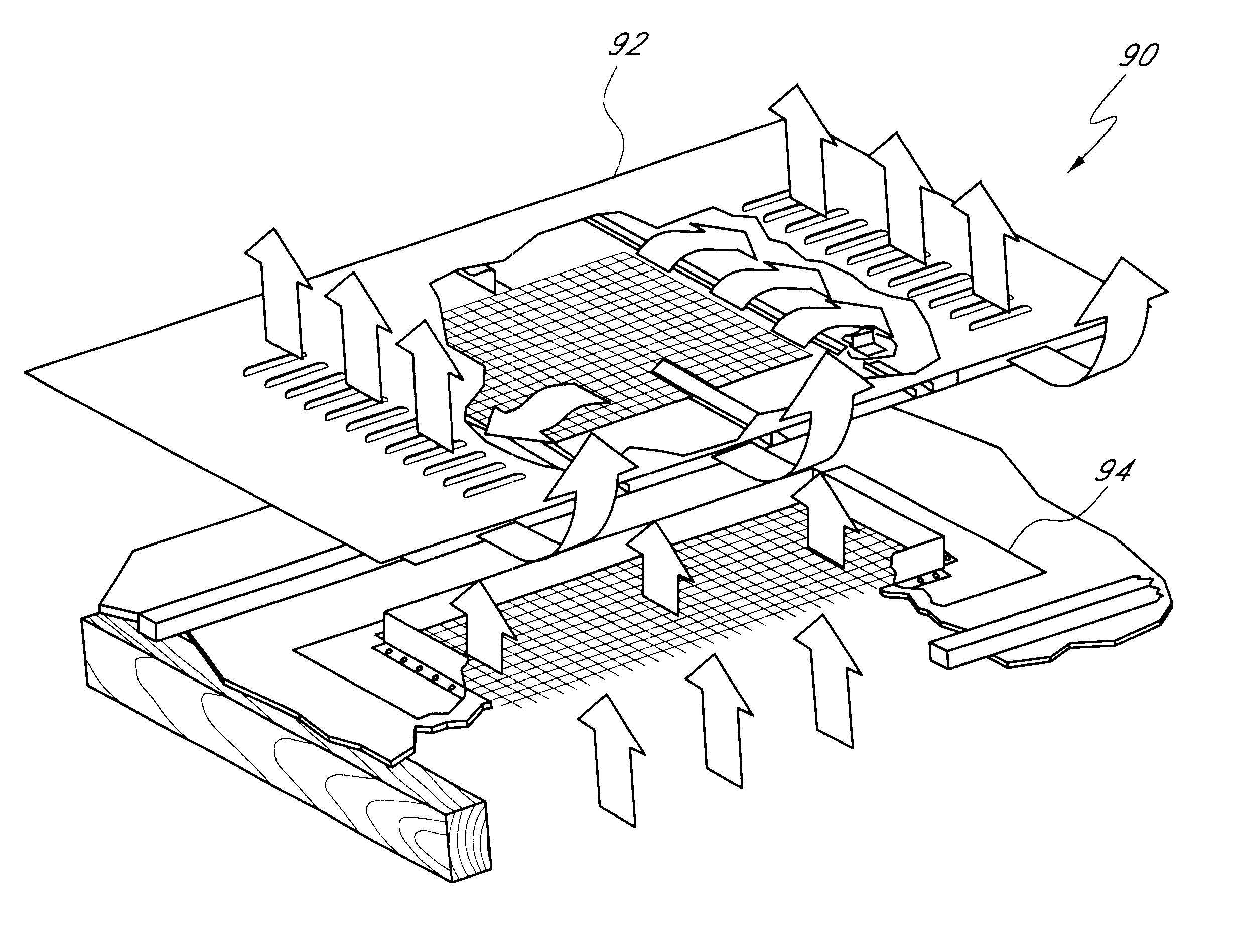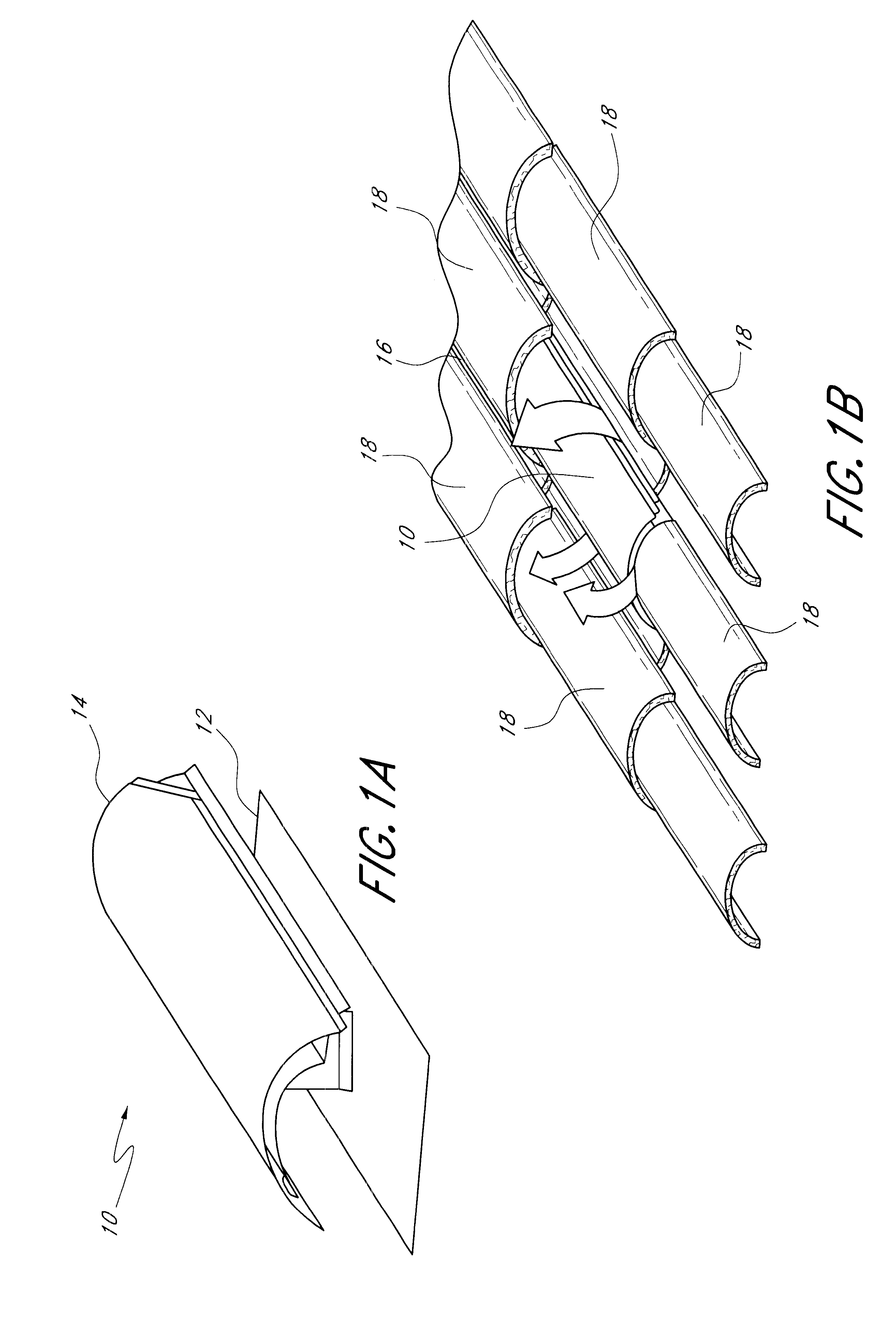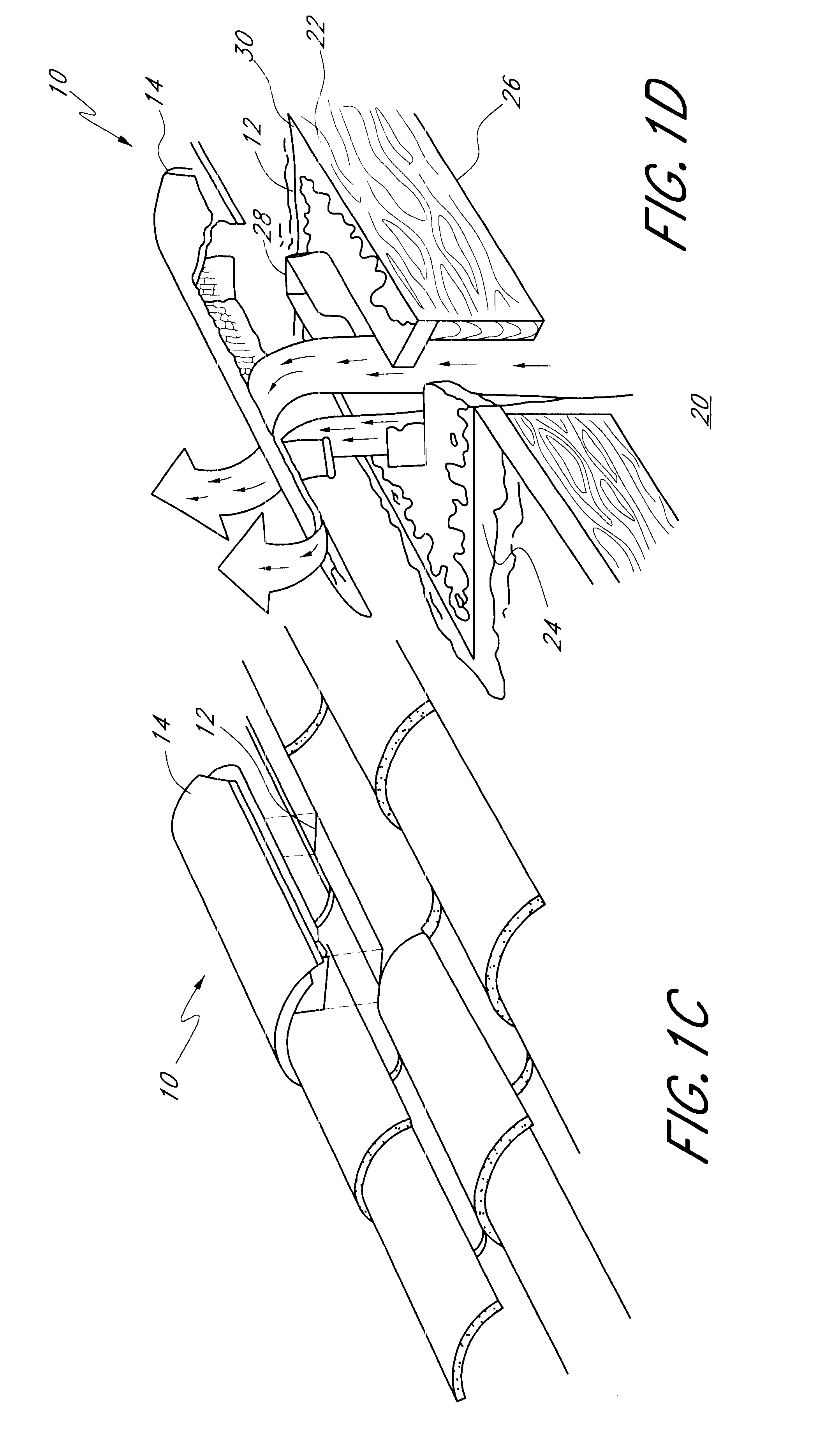Method and apparatus for roof ventilation
- Summary
- Abstract
- Description
- Claims
- Application Information
AI Technical Summary
Benefits of technology
Problems solved by technology
Method used
Image
Examples
Embodiment Construction
FIGS. 1a-d are a series of perspective views of a mission-style cloaked vent tile 10 of the roof vent apparatus of this invention, where FIG. 1a illustrates an isolated vent base 12 and vent cap 14, FIG. 1b illustrates the vent 10 as installed on a roof 16 in conjunction with and surrounded by standard complementary mission-style tiles 18, and FIG. 1c illustrates the vent cap 14 being inserted over the vent base 12.
FIG. 1d is an exploded and partially cutaway perspective view illustrating the air flow pattern from the attic volume 20 through the vent 10. This view also serves to illustrate the installation steps:
Vent base 12 is positioned on roof deck 22 and roof underlayment 24 between roof rafters 26. Vent base opening 28 may be used to mark the roof, so that an appropriate-sized hole is cut into the roof. Flange 30 of vent base 12 is installed and sealed to the roof by cement and nails, and additional flashing is placed and sealed around the flange if necessary. The vent cap 14 i...
PUM
 Login to View More
Login to View More Abstract
Description
Claims
Application Information
 Login to View More
Login to View More - R&D
- Intellectual Property
- Life Sciences
- Materials
- Tech Scout
- Unparalleled Data Quality
- Higher Quality Content
- 60% Fewer Hallucinations
Browse by: Latest US Patents, China's latest patents, Technical Efficacy Thesaurus, Application Domain, Technology Topic, Popular Technical Reports.
© 2025 PatSnap. All rights reserved.Legal|Privacy policy|Modern Slavery Act Transparency Statement|Sitemap|About US| Contact US: help@patsnap.com



